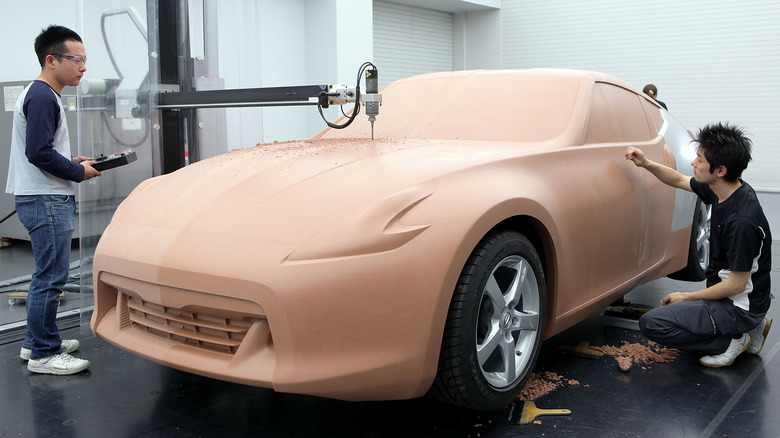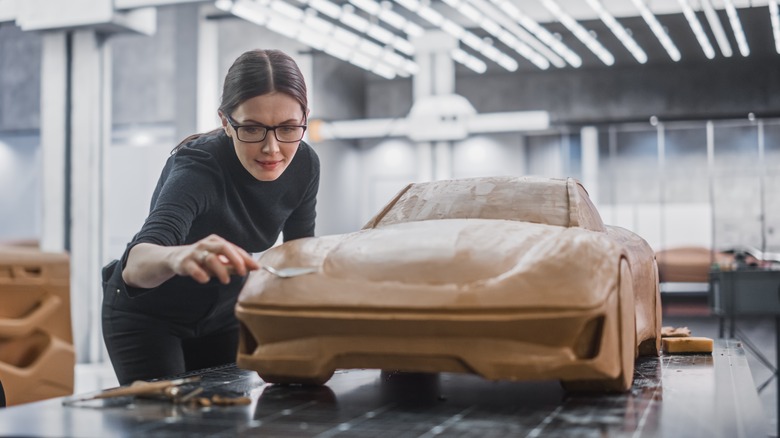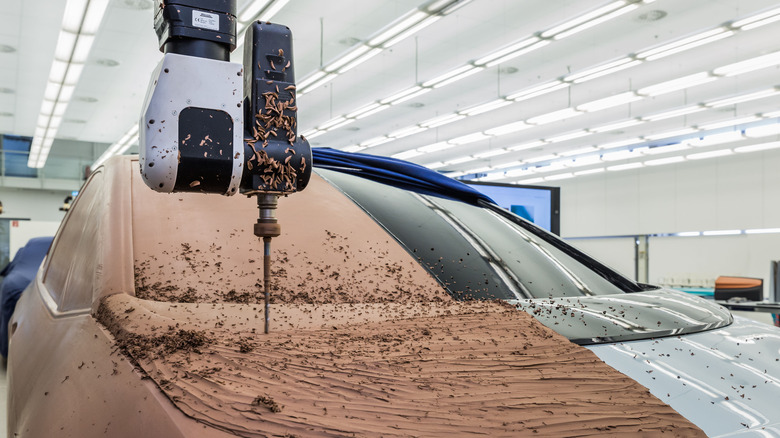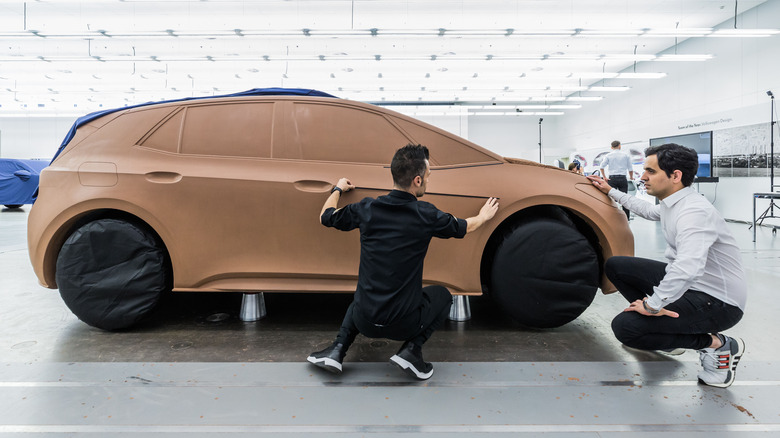The Reason Why Car Manufacturers Still Use Clay Models When Developing A New Vehicle
Depending on who you ask, talking about car companies making clay models during the designing process will elicit either an "I'm sorry, what?" or "Well of course." Sculpting facsimiles of in-progress or concept vehicles out of clay has been around for decades, at both small and full scales.
Yet, despite how far most technologies have come since the early days of the automotive industry, most companies still spend a whole lot of time and money to develop 1:1 visual prototypes. Digital 3D modeling does still happen, and modern virtual reality gear is sometimes used as well, but the analog approach is in no danger of being outright replaced any time soon.
In fact, most car companies refuse to abandon clay models in favor of more economical (and physical space-saving) techniques. Not because the digital tech "isn't there yet" and they're waiting for it to catch up, but because there's no indication that it will ever provide the same essential benefits of physical media.
What goes into a clay model?
Small-scale clay prototypes are usually a comparatively simple matter of creating a basic shape with foam, covering it in clay, and then meticulously building onto and carving the mold until the job is done. Once the look (based on the designers' preliminary sketches) is narrowed down, it's time to make the bigger version. Full-scale clay models operate on a very similar principle but are bigger and more complex.
Typically, a rough interior frame or skeleton is built using metal and then filled out with foam, after which a layer made up of several inches of clay is applied to the outside. After that, sculptors and designers pore over the exterior and begin making a multitude of changes — some significant, some almost imperceptible — until everything looks the way they want it to. Then they meticulously inspect it even more, make mode changes, and so on until the model is eventually considered finished.
In some instances a surface may need to be reshaped, so more clay is added and smoothed into the model's contours. Other times a line or curve may be off by millimeters, in which case the sculptors will carefully shave off the excess material. In all, the journey from concept sketch to full production can take several years, with a good portion of that involving the continued refinement of clay models.
Has the process changed?
While most car manufacturers aren't interested in doing away with clay models, the modeling process has undergone at least a few changes as other technologies have become more readily available. What used to be made up almost exclusively of sketching and sculpting has gotten more streamlined — though it's still primarily about sketching and sculpting.
Now, though, 3D modeling via computer can be incorporated at various points during the design phase, sometimes being viewed in VR to give designers a more detailed look at what's being worked on. It just doesn't replace clay models so much as acts as another form of sketch that can be discussed, adjusted, and pulled from.
The initial construction phase has also been more streamlined through the use of large CNC machines. Once programmed with the proper shape, the machine can mill out (often overnight) the rough clay model into something more closely resembling the silhouette of the project car. At this point, the sculptors can come in and start smoothing out, carving away, and otherwise refining the model.
Why not go all-digital?
The reason clay models aren't going anywhere, despite the cost and time needed to make them, is that digital tech simply cannot replace having a 1:1 physical representation to look at — or provide the malleability of a material like clay. Even in VR, a 3D model in a digital space is no substitute for a real-world object, especially when there are so many fine details and other elements that can't be accurately reproduced or predicted in a computer.
Designers have found that modeling a car in 3D usually doesn't afford the level of extreme precision needed for minute contour detailing and the like, with attempts at going from a 3D model to a physical model often presenting a multitude of areas that need a lot of refinement. And when those changes have to be made, whether due to streamlining airflow or purely aesthetic purposes, sculptors can step in and make direct changes in real time — with everyone seeing the results immediately and accurately in this real world representation.
Similarly, having a full-sized model of the actual vehicle makes aerodynamics testing far more accurate, and since it's modeled in clay minute changes to specific parts of the exterior can be made very quickly before testing again. The same goes for lighting, with designers able to take this realistic physical representation outside or into a showroom to see exactly how various light sources will react to its contours. In essence, there's just no substitute.



